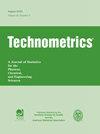用Theseus改进日球天空图估计
IF 2.5
3区 工程技术
Q1 STATISTICS & PROBABILITY
引用次数: 1
摘要
摘要星际边界探测器(IBEX)卫星自2008年以来一直在轨道上运行,探测来自日球层的能量分辨高能中性原子(ENAs)。日球层的不同区域以不同的速率产生ENAs。利用IBEX收集的数据以比以前更高的分辨率估计日球层ENA速率的空间图(称为天空图)具有科学意义。这些天空图随后将被用来辨别目前还不可能的关于日球层性质的相互竞争的理论。IBEX收集的数据对天空地图估计提出了挑战。两个主要的挑战是噪声和不规则间隔的数据收集和IBEX仪器的点扩展函数。从本质上讲,IBEX收集的数据既嘈杂又有偏差,无法用于推断兴趣的底层天象图。在本文中,我们提出了一种称为Theseus的两阶段天空图估计程序。在第一阶段,Theseus利用投影追踪回归和广义加性模型的集成方法,从嘈杂和不规则间隔的数据中估计出模糊的天空图。在第二阶段,忒修斯通过使用正则化将PSF与模糊的地图进行反卷积来模糊天空地图。通过自举计算未模糊的天图不确定度。我们将Theseus与IBEX科学操作中心(ISOC)目前在模拟和实际数据上使用的方法密切相关。在模拟数据上,忒修斯几乎在每一个考虑的指标上都优于ISOC,这表明忒修斯是对当前技术水平的改进。免责声明作为对作者和研究人员的服务,我们提供了这个版本的已接受的手稿(AM)。在最终出版版本记录(VoR)之前,将对该手稿进行编辑、排版和审查。在制作和印前,可能会发现可能影响内容的错误,所有适用于期刊的法律免责声明也与这些版本有关。本文章由计算机程序翻译,如有差异,请以英文原文为准。
Towards Improved Heliosphere Sky Map Estimation with Theseus
AbstractThe Interstellar Boundary Explorer (IBEX) satellite has been in orbit since 2008 and detects energy-resolved energetic neutral atoms (ENAs) originating from the heliosphere. Different regions of the heliosphere generate ENAs at different rates. It is of scientific interest to take the data collected by IBEX and estimate spatial maps of heliospheric ENA rates (referred to as sky maps) at higher resolutions than before. These sky maps will subsequently be used to discern between competing theories of heliosphere properties that are not currently possible. The data IBEX collects present challenges to sky map estimation. The two primary challenges are noisy and irregularly spaced data collection and the IBEX instrumentation’s point spread function. In essence, the data collected by IBEX are both noisy and biased for the underlying sky map of inferential interest. In this paper, we present a two-stage sky map estimation procedure called Theseus. In Stage 1, Theseus estimates a blurred sky map from the noisy and irregularly spaced data using an ensemble approach that leverages projection pursuit regression and generalized additive models. In Stage 2, Theseus deblurs the sky map by deconvolving the PSF with the blurred map using regularization. Unblurred sky map uncertainties are computed via bootstrapping. We compare Theseus to a method closely related to the one operationally used today by the IBEX Science Operation Center (ISOC) on both simulated and real data. Theseus outperforms ISOC in nearly every considered metric on simulated data, indicating that Theseus is an improvement over the current state of the art.DisclaimerAs a service to authors and researchers we are providing this version of an accepted manuscript (AM). Copyediting, typesetting, and review of the resulting proofs will be undertaken on this manuscript before final publication of the Version of Record (VoR). During production and pre-press, errors may be discovered which could affect the content, and all legal disclaimers that apply to the journal relate to these versions also.
求助全文
通过发布文献求助,成功后即可免费获取论文全文。
去求助
来源期刊

Technometrics
管理科学-统计学与概率论
CiteScore
4.50
自引率
16.00%
发文量
59
审稿时长
>12 weeks
期刊介绍:
Technometrics is a Journal of Statistics for the Physical, Chemical, and Engineering Sciences, and is published Quarterly by the American Society for Quality and the American Statistical Association.Since its inception in 1959, the mission of Technometrics has been to contribute to the development and use of statistical methods in the physical, chemical, and engineering sciences.
 求助内容:
求助内容: 应助结果提醒方式:
应助结果提醒方式:


